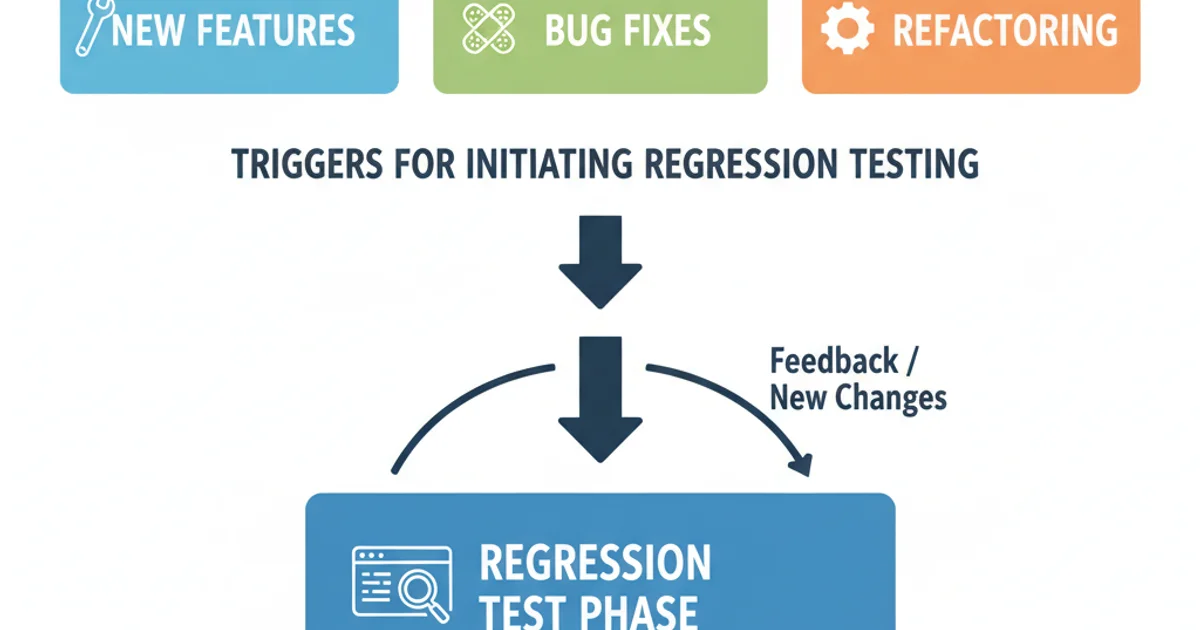What does regression test mean?
Categories:
Understanding Regression Testing: Ensuring Software Stability

Explore what regression testing is, why it's crucial for software development, and how it helps maintain quality and prevent unexpected issues after changes.
In the fast-paced world of software development, changes are constant. New features are added, bugs are fixed, and existing code is refactored. While these changes are intended to improve the software, they can inadvertently introduce new defects or reintroduce old ones. This is where regression testing comes into play, acting as a critical safety net to ensure that software remains stable and functional after modifications.
What is Regression Testing?
Regression testing is a type of software testing that verifies that recent program or code changes have not adversely affected existing features. It's about ensuring that the software still works as expected after modifications, bug fixes, or new feature implementations. The primary goal is to detect any unintended side effects of changes and confirm that the software's overall quality and functionality remain intact.
flowchart TD
A[Code Change Implemented] --> B{Run Regression Tests}
B --> C{Existing Functionality Affected?}
C -->|Yes| D[Identify & Fix New Bugs]
C -->|No| E[Software Stable & Ready]Basic Regression Testing Workflow
Why is Regression Testing Important?
Without regression testing, even a small change could lead to a cascade of failures in seemingly unrelated parts of the application. It's a proactive measure that saves time and resources in the long run by catching issues early. Key benefits include:
- Maintaining Quality: Ensures that the software's quality doesn't degrade over time.
- Bug Prevention: Catches new bugs introduced by changes before they reach end-users.
- Cost Reduction: Fixing bugs earlier in the development cycle is significantly cheaper than fixing them after release.
- Confidence in Changes: Provides developers and stakeholders with confidence that new features or fixes haven't broken existing functionality.
- Customer Satisfaction: Delivers a stable and reliable product, leading to higher user satisfaction.
When to Perform Regression Testing?
Regression testing should be performed whenever there's a change to the codebase that could potentially impact existing functionality. Common scenarios include:
- New Feature Development: After adding any new features.
- Bug Fixes: To ensure the fix didn't break anything else.
- Code Refactoring: When the internal structure of the code is changed without altering its external behavior.
- Performance Enhancements: After optimizing code for better performance.
- Configuration Changes: Updates to environment settings or dependencies.
- Integration with New Modules: When integrating the software with other systems or components.

Triggers for initiating regression testing
Types of Regression Testing
There are several approaches to regression testing, each suited for different situations:
- Retest All: Re-executing all existing tests. This is comprehensive but often impractical for large projects due to time and resource constraints.
- Selective Regression Testing: Running a subset of the existing test suite that is likely to be affected by the changes. This requires careful analysis of the impact of changes.
- Prioritized Regression Testing: Prioritizing tests based on business impact, frequency of use, and criticality of the functionality. High-priority tests are run first.
- Progressive Regression Testing: Adding new test cases to the regression suite as new features are developed.
- Corrective Regression Testing: Re-executing a subset of tests to ensure that a specific bug fix has not introduced new issues.
The choice of approach often depends on the project's size, complexity, available resources, and the nature of the changes made.